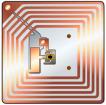WHAT IS BLUETOOTH?

Bluetooth is a wireless standard aimed at providing seamless interconnectivity between different devices. Original work on the Bluetooth standard began in the late 1990s, when Ericson mobile communications launched an initiative to study wireless alternatives to the cables that link the mobile phone with accessories such as headsets.

Bluetooth is named after a Danish king, Herald Bluetooth, who is remembered for uniting Denmark and Norway. This name is appropriate because it shows the role of the standard in uniting devices that otherwise are isolated from each other.
Bluetooth operates in the unlicensed Industrial Scientific Medical (ISM) band (2.4GHz). It uses pseudorandom frequency hopping spread spectrum transmission scheme to minimize interference, since its band of operation is crowded (wireless LAN and microware ovens also operate at the same band).
The band is divided into 79 channels, with frequency spacing of 1MHz each. The Bluetooth system is able to switch frequency 1600 times in a second. A different frequency is selected after each packet transmission, if a packet is lost through interference; the packet is retransmitted on a different frequency channel. By the way, a packet is a chunk of information.
There are three classes of Bluetooth based on the level the radio output power.
CLASS I DEVICES
This class of Bluetooth devices is used for wide coverage networks. They emit up to 100mw of power and can transmit at a range of up to 100 meters
CLASS II DEVICES
These are medium range devices. They emit up to 2.5mW of power and can transmit at ranges of up to 20 meters.
CLASS III DEVICES

This is the most popular Bluetooth class. It is used in devices like computers, printers PDAs, mobile phones, and so on. They emit about one milliwatt and can transmit at ranges of about 10 meters.
Note that the range of operation of any Bluetooth device can be limited by obstructions, such as walls, furniture and human bodies.
The bandwidth of a Bluetooth device ranges from 1Mbit/s to up to 10Mbit/s.
Labels: bluetooth, mobile phone, PC



